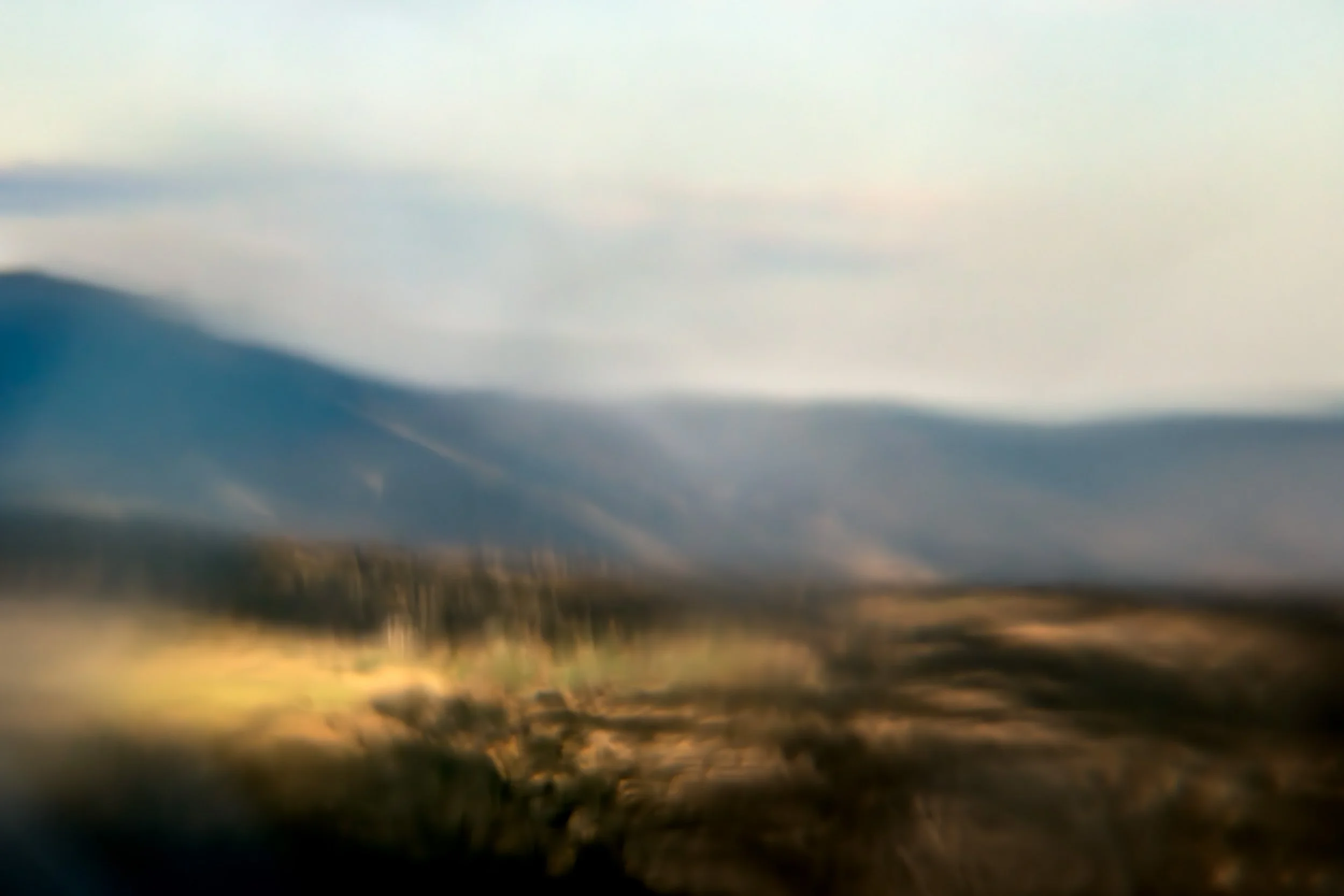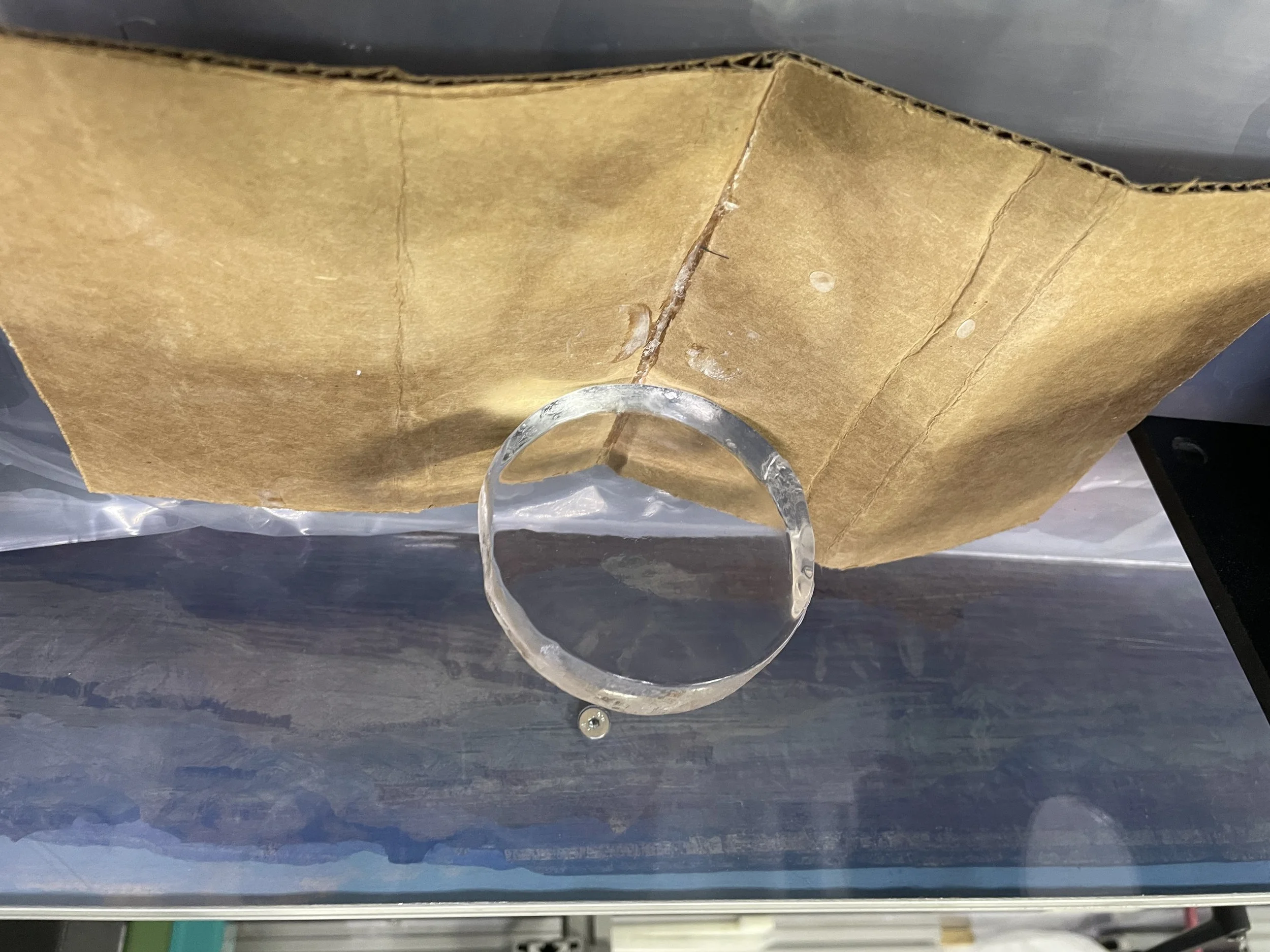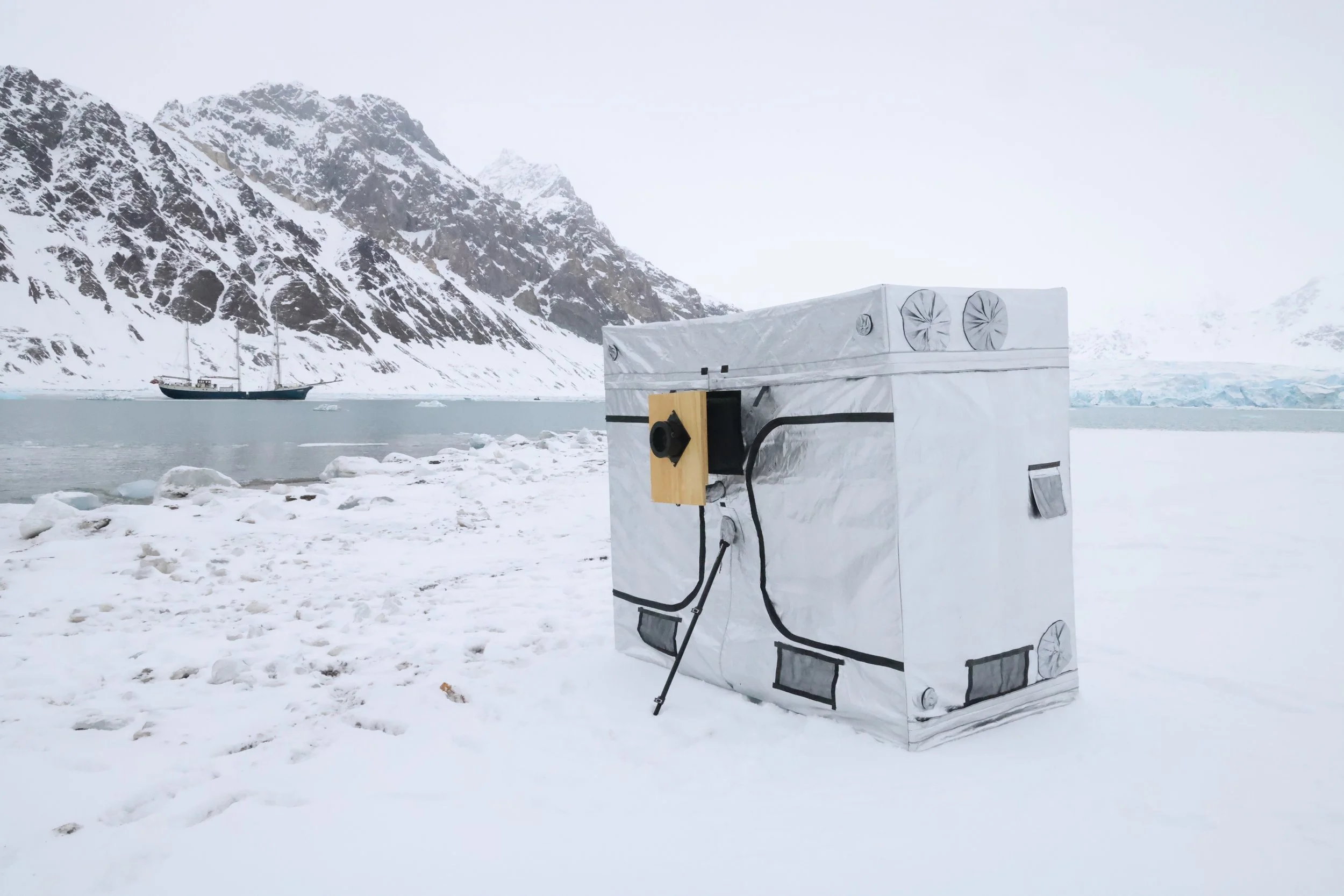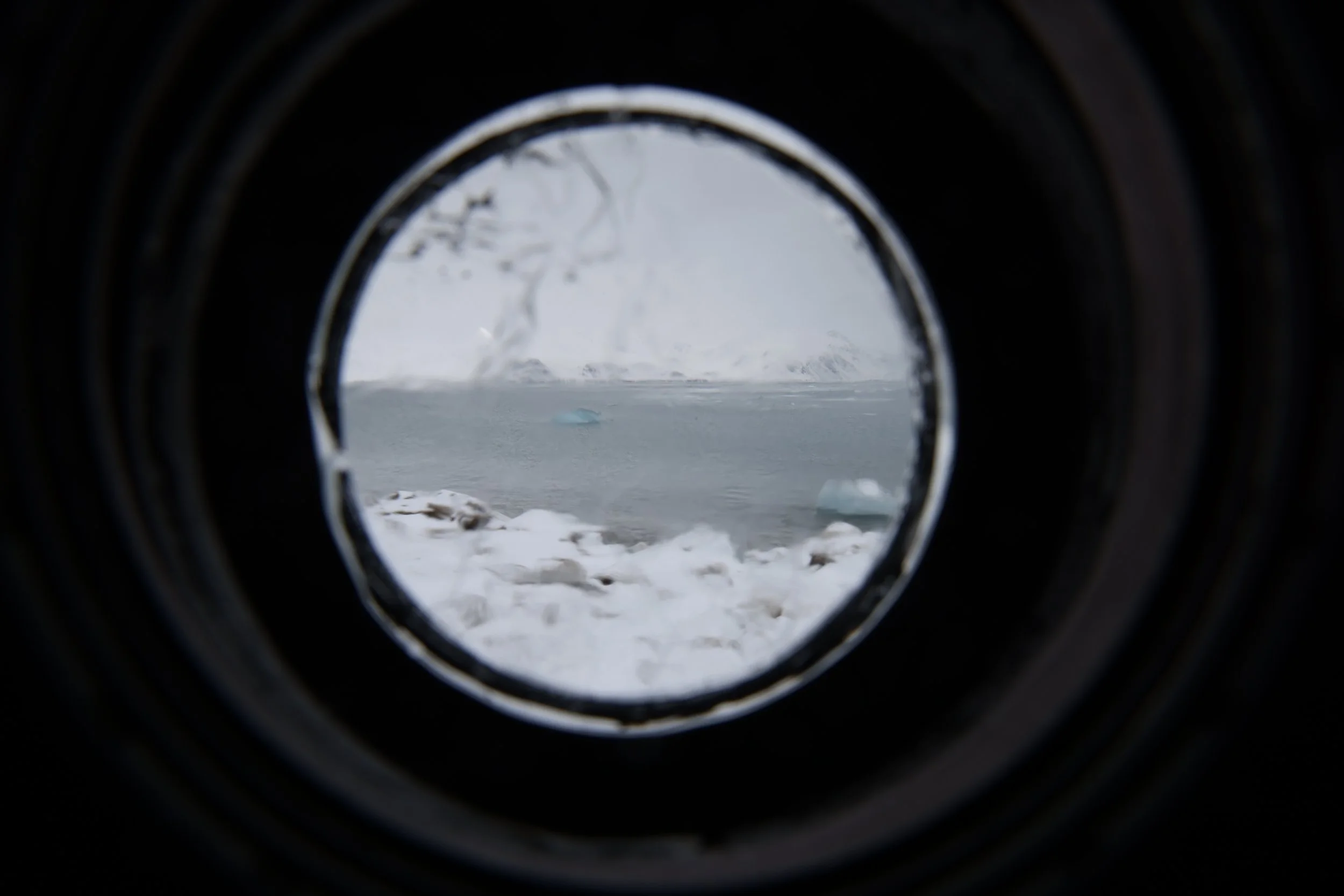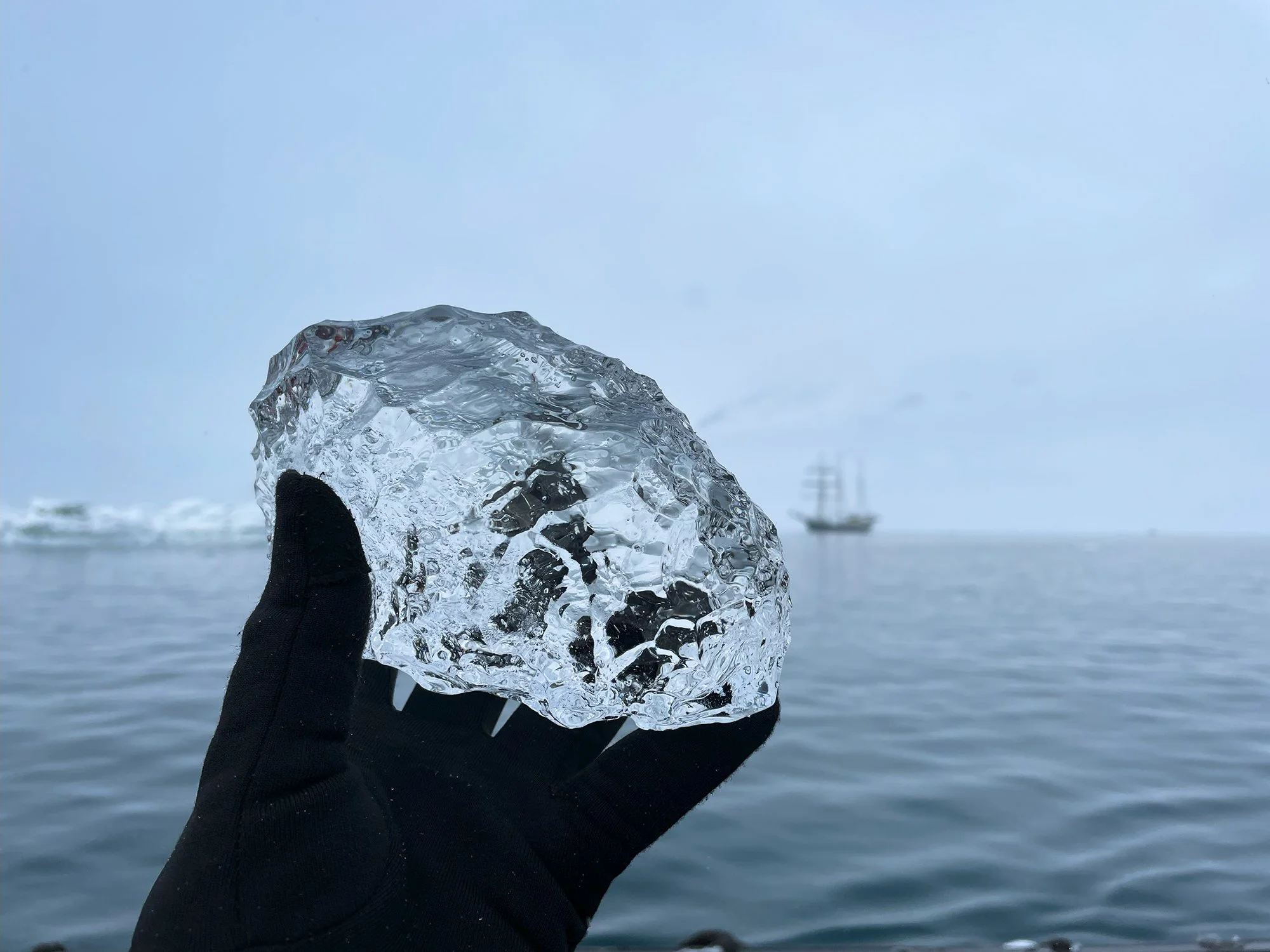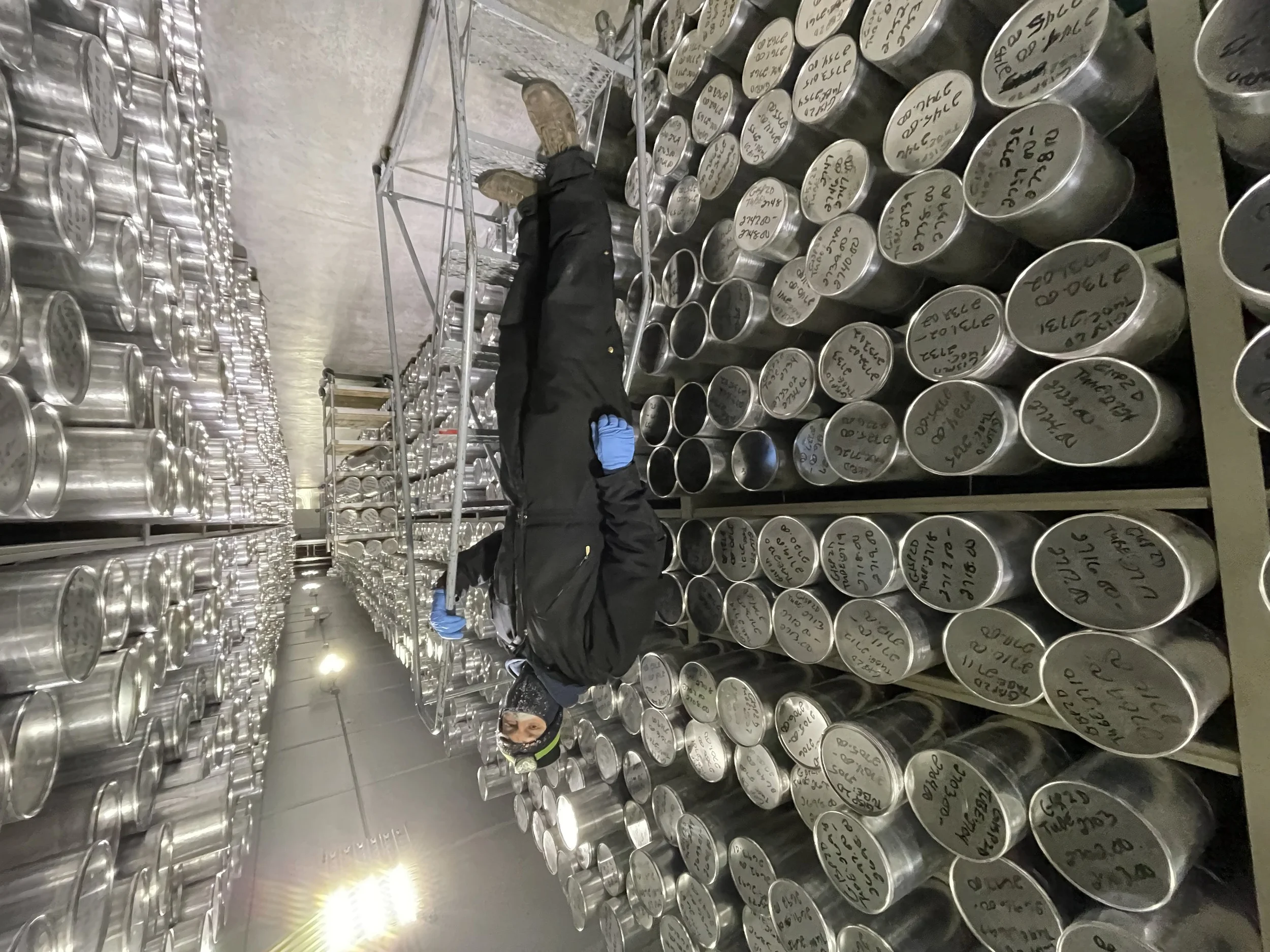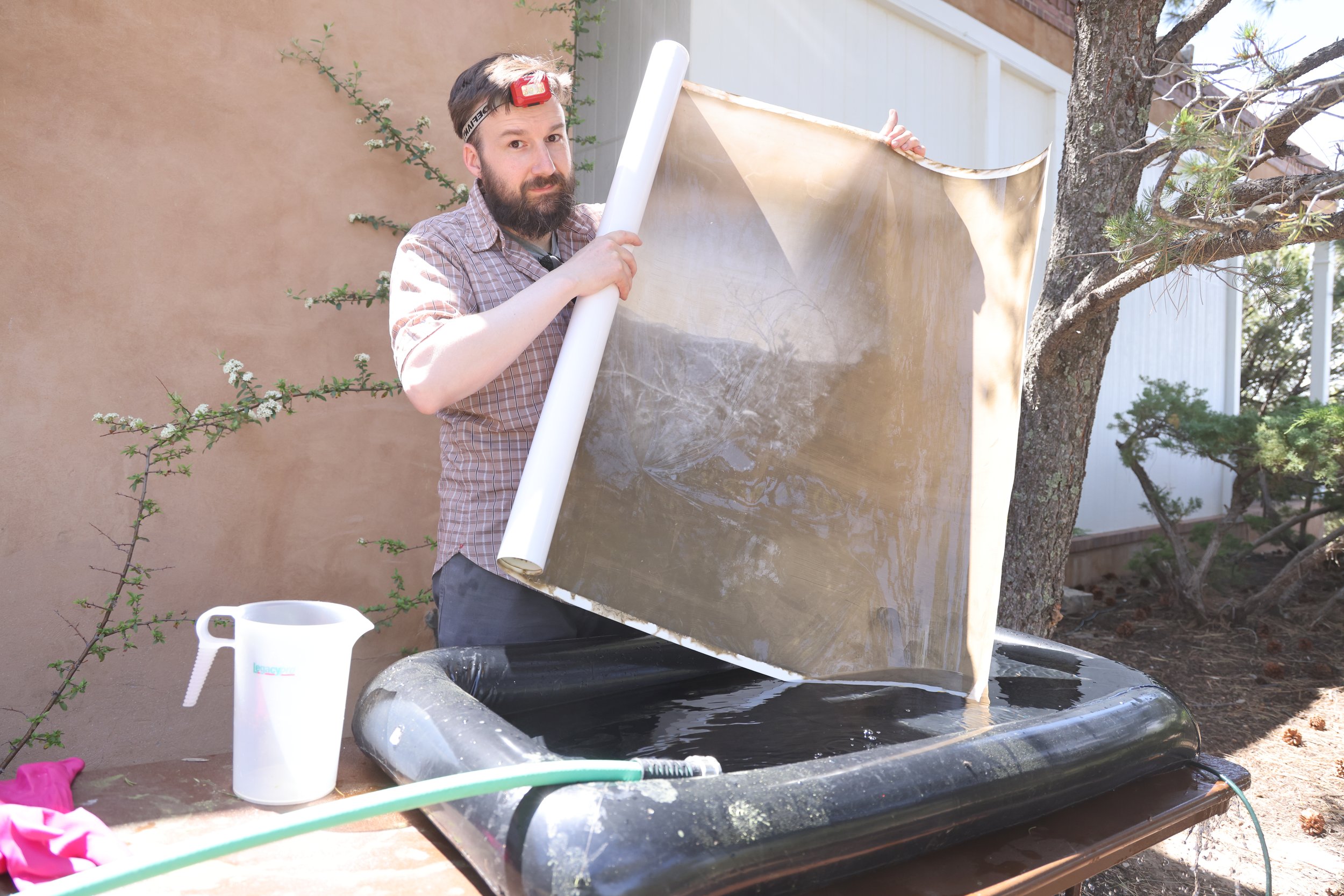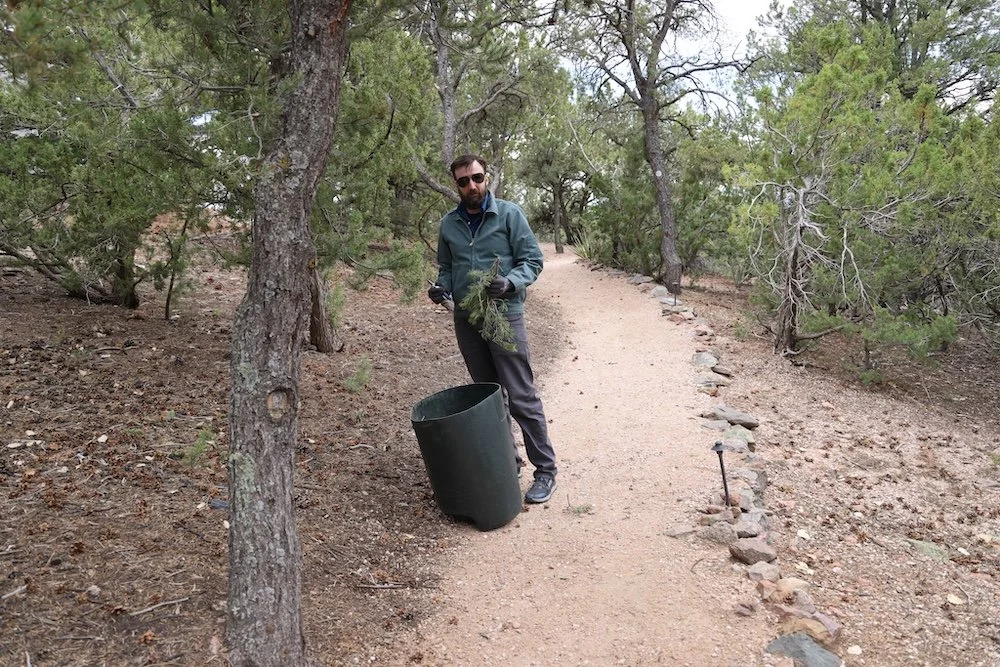How Tristan Duke Built Cameras From Melting Ice to Capture the Fragile Gaze of Glaciers
Welcome to this edition of [book spotlight]. Today, we uncover the layers of 'Glacial Optics,' by Tristan Duke (published by Radius Books). We'd love to read your comments below about these insights and ideas behind the artist's work.
Imagine a lens that disappears as it photographs.
This is not science fiction. It is what artist Tristan Duke built using ice from Arctic glaciers. He sailed to one of the coldest places on Earth to create cameras that melt as they work, showing us climate change in a way we have never seen. These images help us see what is really happening as our planet warms.
A camera made of ice can tell a very different story.
Instead of showing perfect, sharp pictures, Duke’s cameras capture the truth of fragile places that are disappearing fast. He worked with scientists, braved harsh weather, and invented new tools to make this possible. This project connects glaciers, wildfires, and the future of our planet in one powerful idea.
Tristan Duke built cameras from ice to let glaciers speak.
The Book
Glacial Optics is an artistic project by Los Angeles-based artist Tristan Duke that combines photography, invention, and environmental reflection. In this body of work, Duke creates camera lenses out of glacier ice to photograph landscapes shaped by climate change. The project uses ice itself, one of Earth’s most fragile and ancient materials, as both the tool and the message, offering a new way of seeing the natural world. The photographs capture the fleeting, delicate gaze of glaciers and explore the connection between melting ice, wildfires, and human impact on the environment. Glacial Optics invites viewers to consider time, fragility, and the changing planet through a process where even the camera’s lens slowly disappears. (Radius Books, Amazon)
Genesis of the project: What first drew you to the idea of photographing the Arctic using lenses made from its own glacial ice, and when did you realise this wasn’t just an experiment, but the beginning of a deeper inquiry into seeing and impermanence?
This is one of those rare projects that arrived with startling clarity: the idea came during a chance encounter at the Strand bookstore in New York. I was flipping through a dusty old volume when I came across a passage describing a third-century Chinese alchemist who used an ice lens to focus sunlight and start a fire. My mind immediately jumped to the possibility of making a camera lens out of glacier ice.
I knew that, under the right conditions, glacier ice can be incredibly clear; clearer even than diamond by some measures. I was fascinated by the idea of the glacier having a “gaze,” a radically non-human perspective informed by deep time, massive scale, and—increasingly in the face of climate change—fragility. Glaciers loom large in the collective subconscious of our climate hopes and fears, and I saw potential in bringing this highly charged material directly into the image-making process.
It would be a few years before I finally made it to the Arctic with custom cameras and ice lens tools. There were doubts and setbacks along the way, but I kept coming back to the clarity of that original vision in the bookstore.
Seeing through ice: In Glacial Optics, we’re not just looking at melting landscapes, we’re literally looking through them. What did this shift in perspective reveal to you about the act of seeing itself, and how does that shape your understanding of photography?
As an artist, my primary interest is in light and perception. I’ve always been fascinated by how we see and how we make meaning in the world. I also have a long-standing interest in light itself, both as an object and medium. Photography is simply a convenient tool for exploring these interests. The camera mimics the human eye and mind, while its lenses offer an opportunity to engage directly with the physical properties of light.
We're usually expected to look through a photograph, as if it were a transparent window onto a scene. Much of my work seeks to shift focus to the act of seeing itself, to question the fame and the lens… to see seeing.
Each image in Glacial Optics is a portrait of the lens as much as it is of the landscape it captures. In this body of work, I often record the full image circle of the lens, with substantial vignetting, to emphasise this sense that we are looking through a lens.
Photography as a philosophical act: This project seems to suggest that how we see is inseparable from what we see. How do you hope Glacial Optics challenges viewers, especially photographers, to rethink their own assumptions about objectivity, authorship, or permanence?
Photography, as practised through much of its history, has advanced certain ideas of "objective truth." Camera design reflects these values: precision lenses, accurate shutters… everything is engineered to allow repeatability and control. In my work, I aim to subvert that sense of control by inviting unpredictable elements into the process.
In Glacial Optics, each lens is unique, yielding different results depending on the clarity of the ice. Even the same lens changes from moment to moment as it melts. The distortions are, in themselves, indexical traces of glacial melt. In this sense, an image of a glacier made through an ice lens may have more to do with the glacier than one made using a precision-glass lens, even though we typically view the latter as “more true.”
Material as metaphor: Glacial ice isn’t just your lens, it’s your message. What advice would you give to photographers who want to integrate concept and material in ways that are deeply intertwined, rather than symbolic afterthoughts?
People often forget that photography is a material medium. Again, we are usually expected to look past the materiality of the photograph — to see through it as a window. I often work with analog film, calling attention to its material nature, but the same is true of digital photography; we forget it has a material reality, a code of bits, stored in silicon, extracted from the Earth.
I was included in a travelling exhibition called “Mining Photography,” curated by Boaz Levin and Esther Ruelfs, which originated at the MK&G in Hamburg. The accompanying book, which came out of that exhibition, is an excellent resource for anyone interested in conceptual artists exploring photography’s material dimensions.
Advice for photographers working on concept-driven projects: What’s one piece of advice you’d offer to photographers seeking to make work that’s driven not by aesthetics or location, but by a clear and resonant idea?
I may not be the best person to answer this... location and aesthetics are central to my work. But I think what defines my practice is an interdisciplinary approach.
There are many ways of seeing and understanding the world: scientific, aesthetic, conceptual, as well as process-based, place-based, and material-based perspectives. These are all just different lenses. The more we build fluency, to be able to move between different vantage points, the richer our understanding of the world.
For me, a successful work of art must resonate on multiple levels. It should strike viewers on a visceral level—through beauty, wonder, or even revulsion—and then open to deeper conceptual layers. A strong artwork is spacious: it doesn’t offer one clear meaning but forms a constellation of ideas, inviting shifting perspectives and ongoing inquiry.
Co-creating with nature: You’ve described the ice lenses as collaborators. What did it feel like to relinquish a degree of authorship to the natural world, and how might embracing this kind of collaboration shift a photographer’s creative mindset?
This work is very much about bearing witness to the climate crisis. By invoking the glacier’s deep time and massive fragility, I hoped to find a perspective beyond our limited human frame.
In my work, I see the landscape as an animate force, a living system with wisdom we can access. Too often, photography renders landscape inert, a passive subject to be measured, documented, or otherwise acted upon. But in Glacial Optics, the glacier quite literally participates in the image-making. The photographs are by the landscape as much as of it.
Working this way is humbling. It requires a kind of surrender to the elements —and a willingness to adapt to the situation on the ground. This requires a lot of creativity and problem-solving, and interesting things start happening when things don't quite go as planned.
Letting go of permanence: In a world that prizes resolution, clarity, and permanence, you chose a medium that melts and images that blur. Was that a statement about photography itself, and what does it mean to make work that disappears as it’s being made?
People often ask me, “what’s the advantage of using an ice lens camera?” as if I'll say it gives a higher resolution, or wider aperture, or some other technical advantage. Photography is so deeply invested in a narrative of technological progress, people are used to thinking about the medium in these terms. I always kind of dread meeting other photographers who want to have that “how big is your lens” conversation… it’s all about the tech, having the best gear. Not that there’s anything wrong with that approach — I just have zero interest in it.
I think this cult of progress in photography really began with Kodak and the Brownie Camera in the late 19th century; its advertising slogan was, “You press the button, we do the rest.” Before that, photographers were chemists, alchemists, optical scientists, and carpenters… they built their own cameras, mixed their own chemistry and emulsions, and coated their own plates. My work is infused with the spirit of invention from that early period of photography.
I’ve never been content to “just press the button.” For me, it’s all about integrating the conceptual, the poetic, the technical, and the material… creating new ways of seeing and understanding our world.
Art at the edge of science: Your practice sits at a unique intersection between scientific thinking and poetic gesture. How do you navigate that balance, and what have you learned about communicating urgency through beauty, rather than data?
As I said above, this project was born from a sense of urgency around the climate crisis. We all struggle to comprehend the global scale of the problem. When I sailed to Svalbard—the fastest warming place on the planet—I felt it was my responsibility as an artist to help people understand what’s happening.
I have worked with many climate scientists, and they all say the same thing: we know what’s happening, but society isn’t responding fast enough. This is where I think art comes in. Art helps us integrate new information as a culture. We desperately need new stories, new perspectives as we move into an uncertain future.
Just reporting the science doesn't always work. If you start with statistics about melting glaciers or sea level rise, people often shut down. In my work, I try to tap into people’s sense of wonder, to get them curious about their world. When I tell them I made camera lenses out of melting glacier ice, they immediately want to know more… and suddenly they are asking questions about ice core science and climate models.
Now more than ever, we need curiosity and creativity. The climate crisis is an ongoing failure of imagination.
What’s next: Do you see Glacial Optics as a one-off gesture or the beginning of a longer series of elemental explorations? Are there other materials, environments, or questions you’re drawn to see through next?
In a past project, I collaborated with two artists (Lauren Bon and Richard Nielsen) in the Optics Division to develop photographs in a naturally occurring photochemical brine pool which we discovered in California's Owens Dry Lakebed. Later, during a residency at the University of Wyoming, I worked with microbiologists to show that the photochemical properties of the lakebed came from sulphur-metabolising extremophile bacteria in the brine. In another, more recent project at SITE Santa Fe, I developed images using a developer made out of local pine needles. So I have a longstanding interest in place-based and environment-based photographic processes.
But Glacial Optics took off in ways I never quite expected. The response has been powerful. When I set out to document Arctic glaciers through ice lenses, I never imagined the images would appear in National Geographic.
I’m continuing the series as the Peter E. Pool Research Fellow at the Nevada Museum of Art. I recently worked with the Yosemite Museum to explore the history of glacier measurements within the park and conducted aerial surveys of the rapidly vanishing Sierra Nevada glaciers using ice lenses.
There’s still much more to explore in Glacial Optics. But I’m also excited to return to other projects—like printing photographs so small they require a microscope to see, making holograms, and designing large-scale optical installations.
To discover more about this intriguing body of work and how you can acquire your own copy, you can find and purchase the book here. (Radius Books, Amazon)
More photography books?
We'd love to read your comments below, sharing your thoughts and insights on the artist's work. Looking forward to welcoming you back for our next [book spotlight]. See you then!
